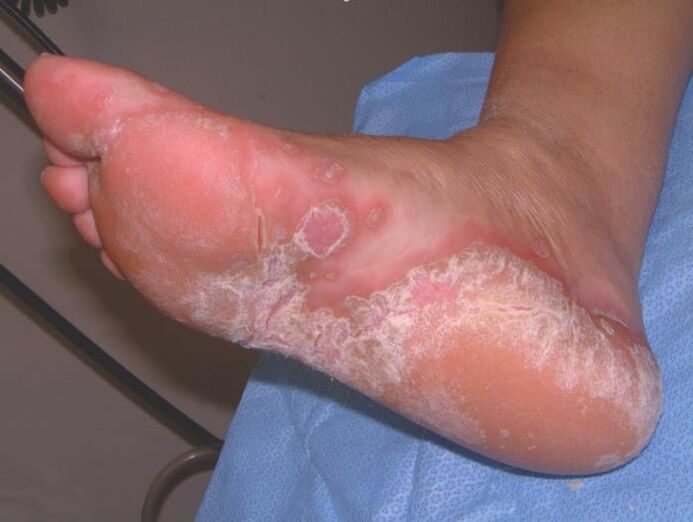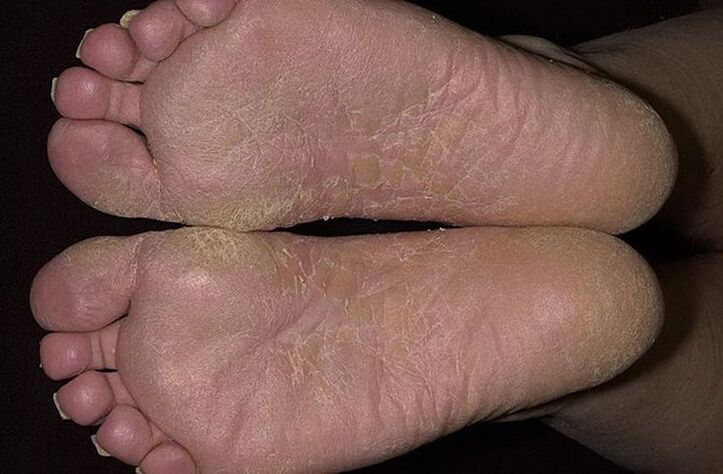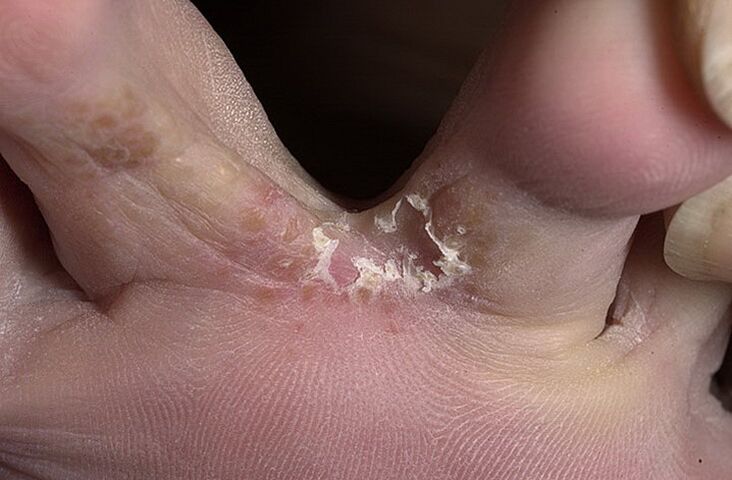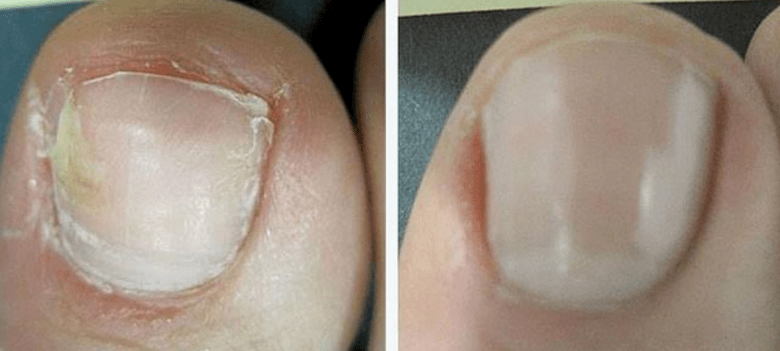Foot mycosis is one of the most common diseases caused by parasitic fungi. In medical practice, there are several types of this pathology. It is important to identify the fungus on the foot early in its development. Then it will be faster and easier to get rid of it. In this case, you do not need special treatment, and moreover, surgical intervention. With the manifestation of weak fungal activity, simply use ointments or antifungal baths using folk recipes.
Fungi and their types

Although there is foot fungus, not everyone who is infected knows what foot fungus is like.
The following are the main types of mycoses:
- Squamous or scaly.
- Interrelated. It is characterized by a type of skin intertrigo.
- Hypertrophic, atrophic, and normotrophic onychomycosis. The difficulty in treating this disease lies in the fact that all types can be combined with each other.
- Dyshidrotic. It is marked by a violation of the work of the sweat glands.
At different stages of development, this pathology looks different. Foot mycosis is a common name for two diseases: epidermophytosis and rubromycosis, the process of which progresses in the same way.

Scaly mycosis
In the early stages, the fungus is manifested by the defeat of one leg, and after a certain time the disease spreads to the other leg.
The skin turns red and then peels off. The area of redness in all patients is different and depends on its stage of development. Many people are not bothered despite the itching in the affected area, the skin may not peel off. That is why they turn to a dermatologist only when the foot is affected in the last stages of the disease.
Dyshidrotic fungal infections

Everyone who suspects the emergence of this disease should know what kind of foot fungus from all forms of development. This pathology is characterized by the appearance of mini vesicles in the arch of the foot. Very little time passed, and they came together, turning into large bubbles, their shells quickly breaking and superficial wounds on the skin becoming visually visible.
Pathology can spread to the rest of the foot with the appearance of a diaper rash. In this case, the patient begins to itch, a painful sensation appears. Once everything is healed, exfoliation begins.
The most unpleasant disease is the formation of bacterial fungi. In this case, cloudy fluid and pus flow out of the bursting bubble. At this stage of pathological development, there is a slight increase in temperature and unbearable pain. Swollen foot skin.
The process of dyshidrotic mycosis can last for several months. The period of improvement of the foot condition alternates with relapse.
Interrelated fungi

This type of fungus on the skin of the feet is the most common. It appears independently or together with a form of squamous pathology. The disease is manifested by cracks in the skin, where a white rim is formed, and then the skin begins to peel. The space between the fingers becomes wet. The patient experiences itching and burning. Skin surface defects appear, accompanied by severe pain.
The protective function of the skin is reduced and becomes loose. This encourages the penetration of streptococcal infection into the skin. Purulent inflammation appears, characterized by redness, itching, swelling and severe pain.
Originous intert fungi are most often characterized by a long chronic disease process. In winter, the pain usually subsides, and in summer it gets worse.
Onychomycosis or nail fungus

When the first signs of the disease appear, the patient’s job is to contact a dermatologist in a timely manner, and he or she will determine how to get rid of the fungus on the feet.
Onychomycosis of the nails is a more dangerous disease than a fungal infection of the feet, as it takes longer to heal.
Various fungal infections that affect nail plates:
- Atrophic onychomycosis. First of all, the nails become thinner, then crumble.
- Hypertrophic onychomycosis. The thickness of the nail increases, acquires a yellow color. Long growth stopped. The nail plate begins to crumble and flake off.
- Onychomycosis is caused by mold. This pathology does not develop on its own. Often develops against a background of other diseases. In this case, the nail plate can be painted in any color, from black to green. The periungual roller is often inflamed.
In its neglected form, the disease attacks the whole body, and even penetrates into internal organs. Pathological changes often begin to develop from the edges of the nail plate. Stripes, spots, and other "patterns" appear first.
Methods of treatment

Not every patient knows how to get rid of fungus from the feet, but dermatologists do. Treatment primarily involves blocking the development of fungal infections. To prevent re -infection of the feet with the fungus, complex treatments are used:
- External therapy course. Antifungal ointments, creams, sprays are used in treatment.
- Course of treatment with the use of antimycotic drugs.
- Use of antihistamines. They are taken in case of severe itching and hypersensitivity to irritants that cause allergies.
- Course of therapy with intake of vitamins and minerals.
- Antibacterial drugs. They are used in case of a bacterial infection in the body.
By seeing a doctor, one will know how to treat nail fungus, heels and the space between the fingers. With more advanced forms of the disease, doctors usually prescribe complex treatments by taking pills and applying ointments. Systemic medications are prescribed to patients who have undergone a severe process.
For the treatment of fungal infections on the feet at home, the following folk recipes are used:
- Vinegar. Due to its antiseptic properties, grape vinegar is used for baths.
- Salt and soda. They are dissolved in water in equal amounts and make a bath that helps get rid of fungus on the feet.
- Oak bark, calendula inflorescences, blackberries. Perform cleansing on the affected part of the feet with a decoction of this medicinal ingredient.
The most effective is the complex treatment of fungi with the use of ointments and drugs of various pharmacological actions. Treatment will not be necessary if you listen to the doctor's recommendations and periodically take precautions.
Antifungal drugs
Foot fungus and interdigital space are removed with effective fungicide medications.
Since the fungus can manifest itself in any form, the specialist must choose an effective medication to combat this infection. Some drugs are toxic and can cause side effects; the drug is taken under the close supervision of a physician. Rapid positive treatment results depend on the correct diagnosis not only of the disease, but also its stage of development.















